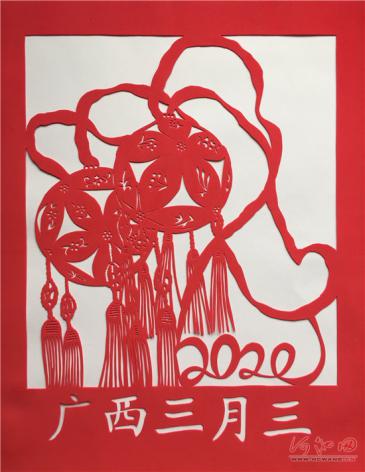Paper-cutting skills of the Mulao ethnic group

A Mulao paper-cut work themed around Guangxi's Sanyuesan Festival. [Photo/hcwang.cn]
Paper-cutting of the Mulao ethnic group in Hechi, Guangxi Zhuang autonomous region is a kind of traditional art that uses scissors or a knife to cut patterns on paper. It is rich in content, and is widely used in daily life and various folk activities.
Mulao folk paper-cutting has a long history and a unique style. It first appeared in the Tang Dynasty (618-907) and had its heyday during the Ming and Qing (1644-1911) dynasties.
It is mainly monochromatic paper cutting, which is made with colored paper, and uses a combination of cutting, engraving, and tearing techniques. The content of these paper-cuts typically involve flowers, historical stories, myths and legends, folk stories, auspicious patterns, totem symbols, folk traditions, landscape scenery, animals, as well as daily life.
Mulao paper-cuts are a traditional art produced on the basis of a farming society. The theme, content, and art form have a strong rural flavor and local characteristics. It has artistic characteristics, such as diverse forms, wide themes, full composition, and exaggerated shapes.
At present, Mulao paper-cutting has become a unique art category, which has been exhibited in and out of Guangxi as one of the treasured arts of Chinese folk paper-cutting. With the divergence of the Mulao people, the teaching and cultural exchanges of the folk artists, Mulao paper-cut works and handicrafts are displayed all across the country, even spreading to the United States, Canada, Australia, Sweden, Denmark, Finland, and other countries.
In December 2018, the paper-cutting skills of the Mulao ethnic group were included in the seventh batch of Guangxi's autonomous region-level intangible cultural heritages.
